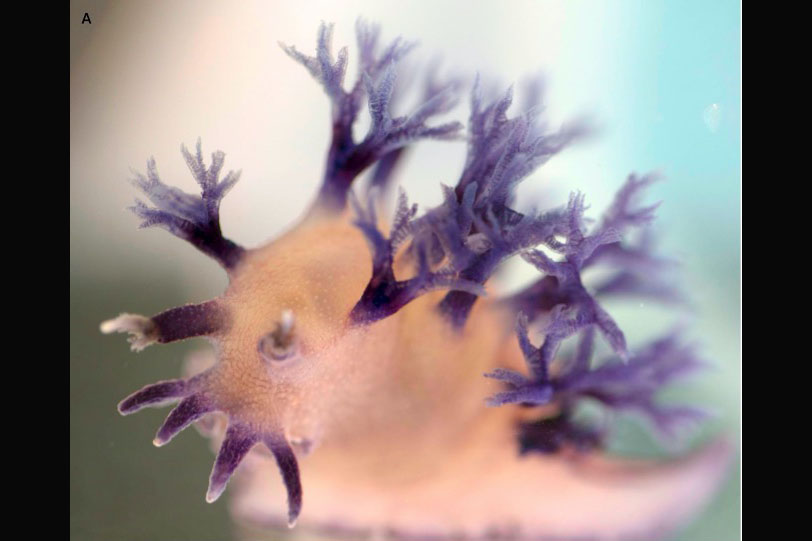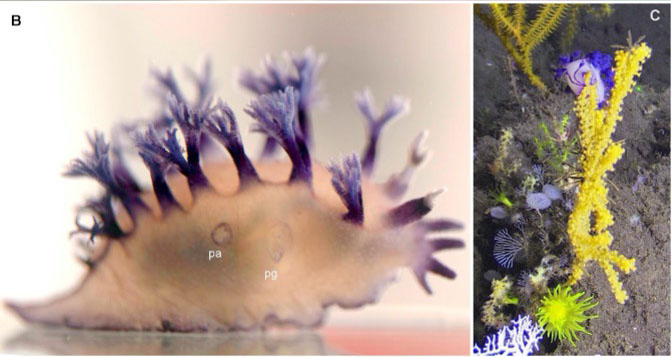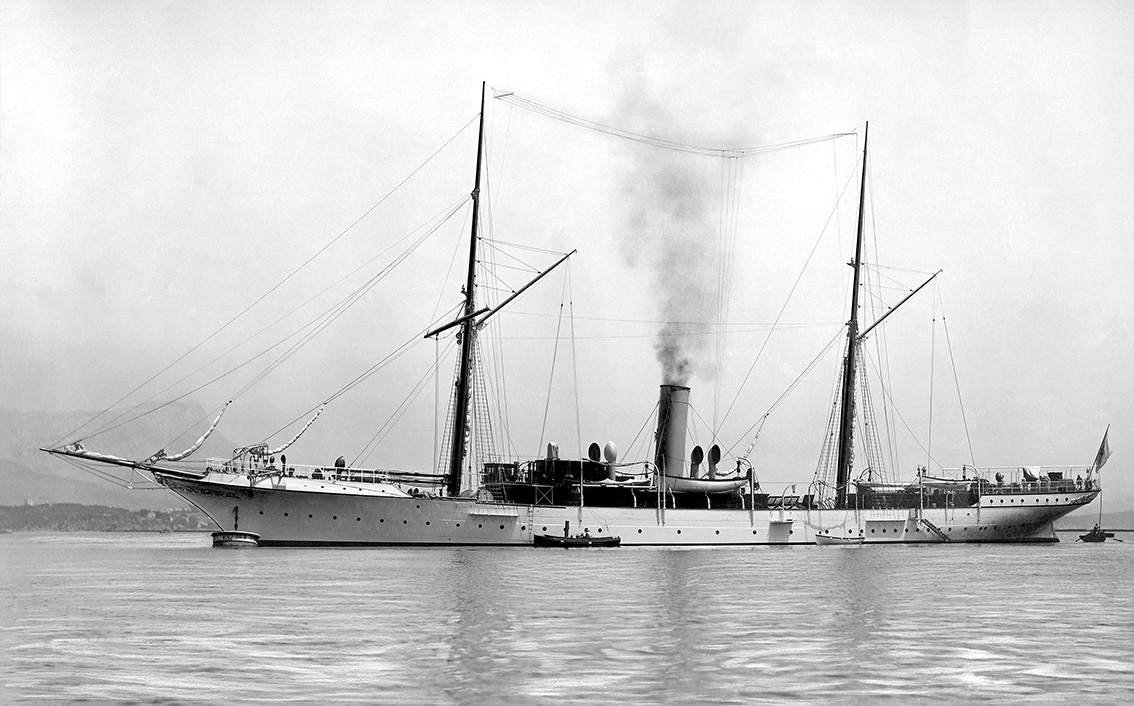24 of February, 2021
A nudibranch called Tritonia hirondelle
A tribute to the expeditions of Prince Albert 1st of Monaco
In 2019, a new species of sea slug was observed and collected for the first time in the deep waters of Cabo Verde, off the south coast of Fogo Island, at a depth of 260 m. The expedition, carried out in collaboration with the German Oceanographic Institute GEOMAR, followed on from research started in 2017 during a mission of the Monaco Explorations in Cabo Verde.
It is at the pilot controls of the submersible Jago of the GEOMAR institute, that the scientists discovered and collected this new species. After analyses, they decided to name the animal Tritonia hirondelle to honour the expeditions of Prince Albert 1st of Monaco.

Tritonia hirondelle
Behind this discovery, three researchers. Dr. Rui Freitas from the University of Cabo Verde, sampled the nudibranch and was also the scientific advisor of Monaco Explorations mission in 2017. His colleagues, the taxonomists Jesus Ortea and Leopoldo Moro, respectively researcher at the University of Oviedo in Spain and member of the Biodiversity Department of the Canary Islands Government, studied and described the specific characteristics of this new mollusc. The team named this new species Tritonia hirondelle, to honour the oceanographic expeditions carried out by Prince Albert 1st aboard two of his four exploration vessels, called Hirondelle I et II.


A bit of history
In the 1900s, the Prince navigator carried out several campaigns in the eastern Atlantic, mainly in the Azores and Madeira. One of his expeditions took place in Cabo Verde aboard Princess Alice II, another of the Prince’s vessels. He discovered several new species, including the Donzelle (Holcomycteronus profundissimus), a small abyssal fish that for a long time held the record for the deepest fish ever caught, and caught rare species such as the Long Dorsal Shark (Pseudotriakis microdon), two unique specimens from the natural history collections of the Oceanographic Museum of Monaco, still today displayed in the exhibition rooms.
More than a century after the expeditions of Prince Albert 1st, this new discovery illustrates the richness of a marine biodiversity that is still incompletely inventoried and listed.
Did you say slug?
The slug Tritonia hirondelle is a heterobranched gastropod mollusc of the order Nudibranches (open or externals gills), family Tritoniidae. It measures 30 mm in length. Its external gills look like flocks of blue swallows (“hirondelle” in French), another reason, with the historical nod, to choose the name.
The collection of the Oceanographic Museum of Monaco
At the Oceanographic Museum of Monaco, a collection of 106 nudibranchs including 21 different species is preserved and computerized. The zoological collection of Prince Albert 1st includes about 50 000 specimens of marine animals including fish, higher vertebrates (reptiles including giant skins, marine mammals, birds) and many groups of marine invertebrates including sea slugs. It is important to note that this collection also includes more than a thousand “types”. A “type” is the first sample from which a new species is described.
All these collections are accessible on request to the Heritage Department of the Oceanographic Institute, Albert 1st, Prince of Monaco Foundation. Every year, researchers from all over the world consult these reference collections.
Cutting edge technology
Observed at a depth of 260 m, the sampling was carried out thanks to the arm of the submersible Jago, equipped with a vacuum, and to the meticulous work of her pilot. Jago is a small submarine operated by the German oceanographic vessel Poseidon, as part of the cooperation between the German Oceanographic Institute GEOMAR and the Institute of the Sea of Cabo Verde, both partners of Monaco Explorations mission in 2017.
Scientific publications
The description of this new species is published in the Spanish-Cuban journal Avicennia, specialized in tropical biodiversity. The new species is included in the World Register of Marine Species WoRMS.
